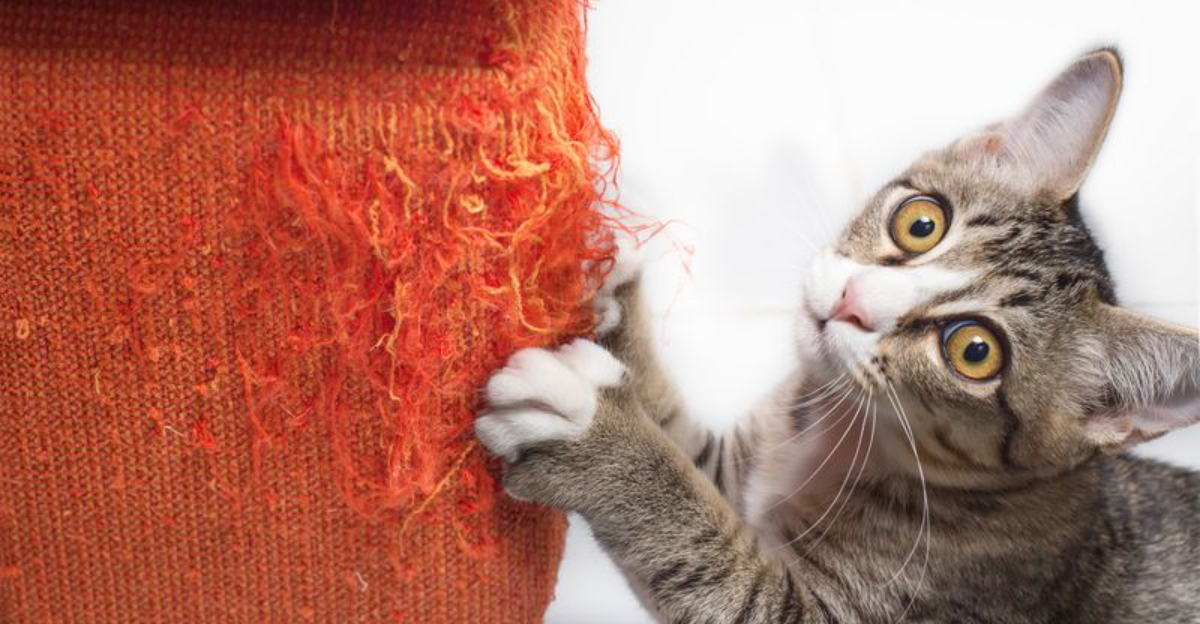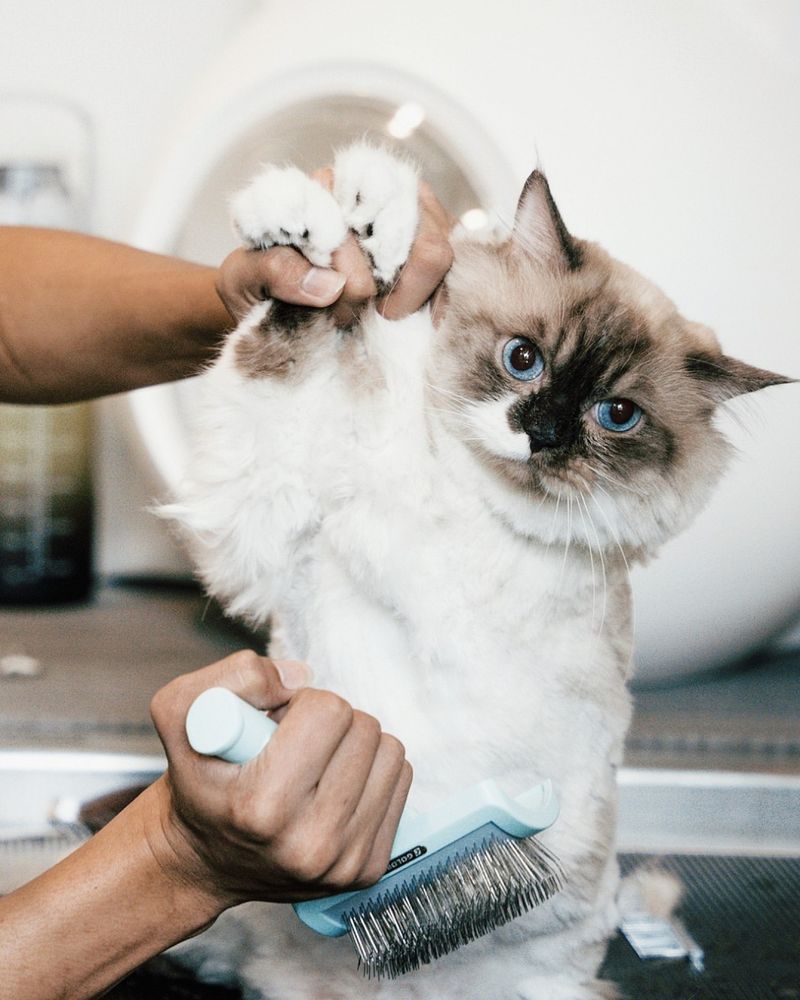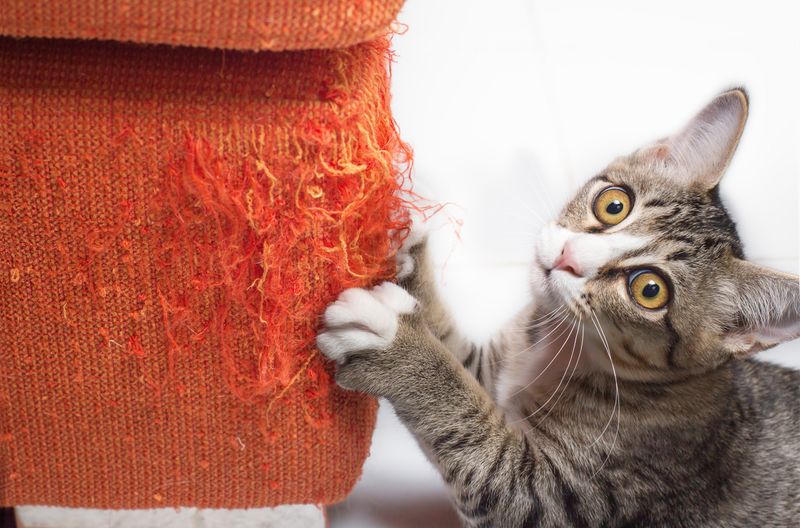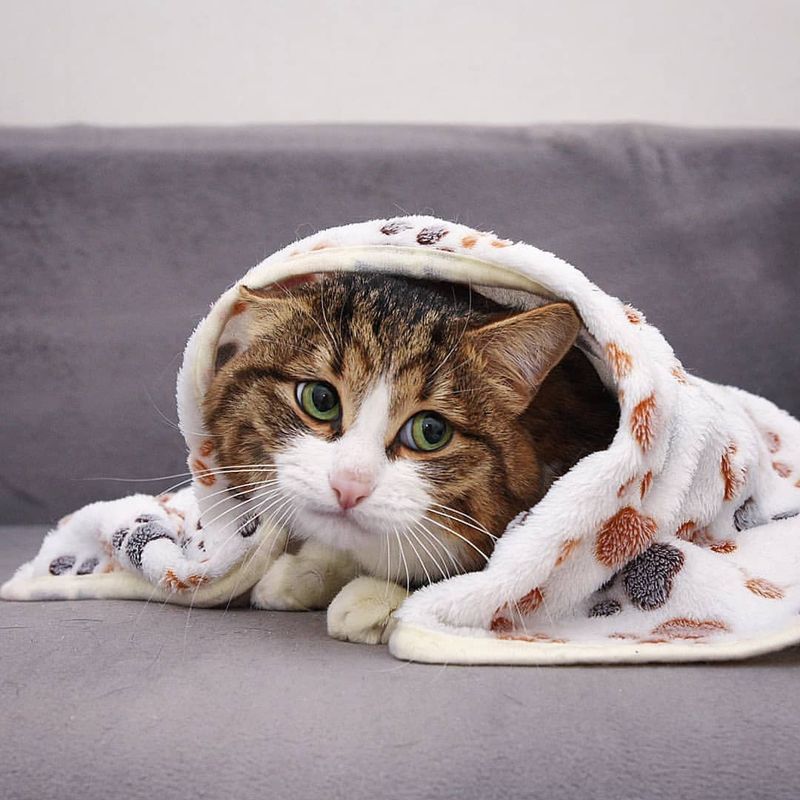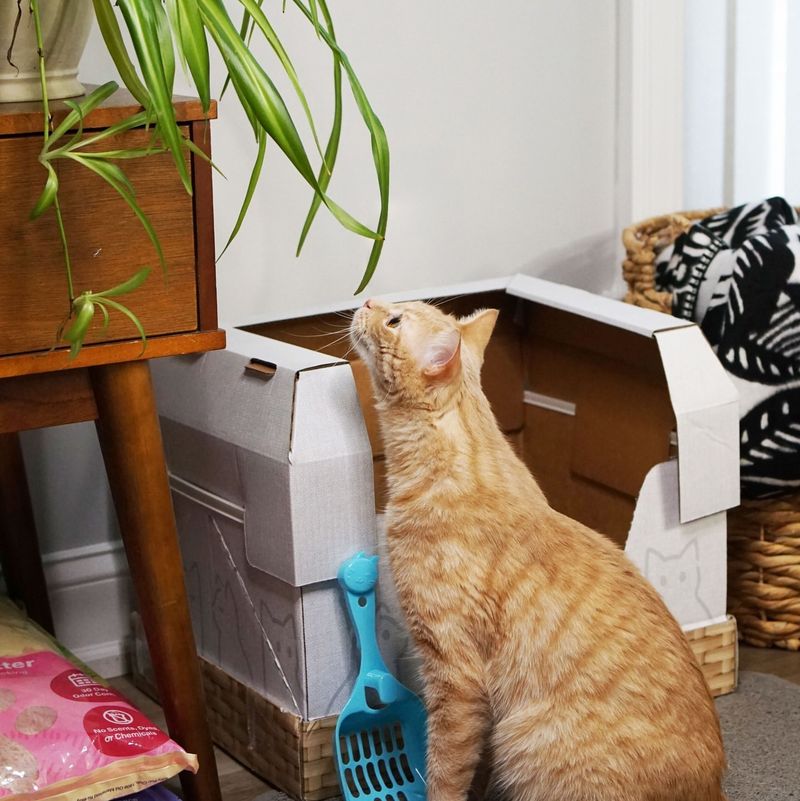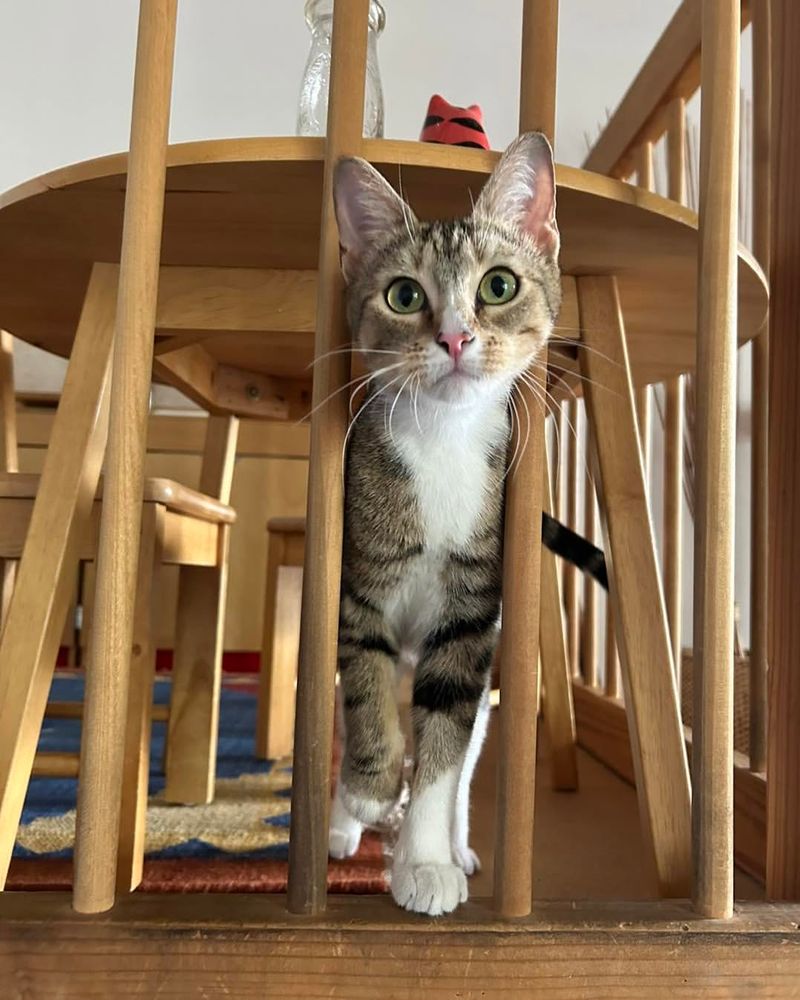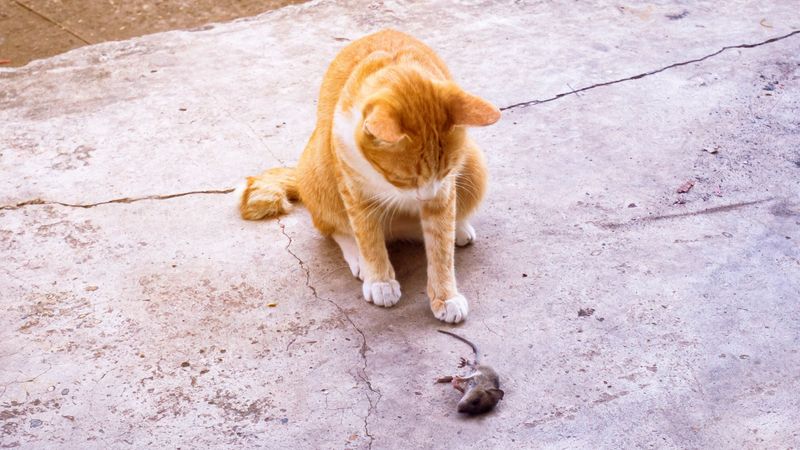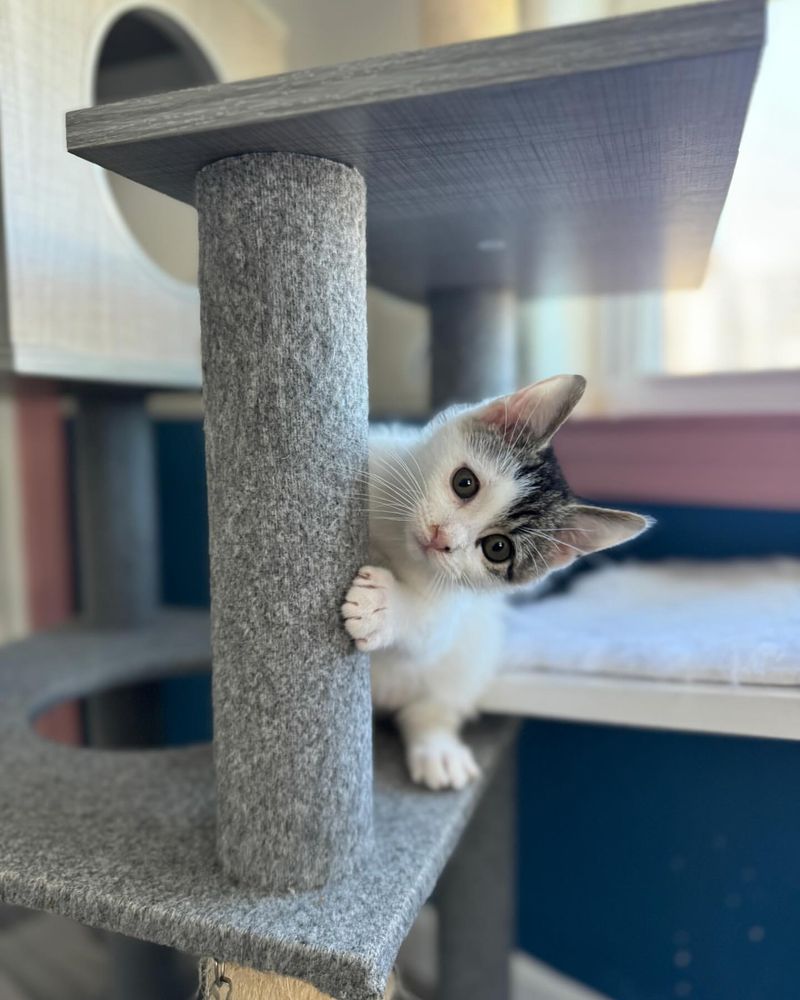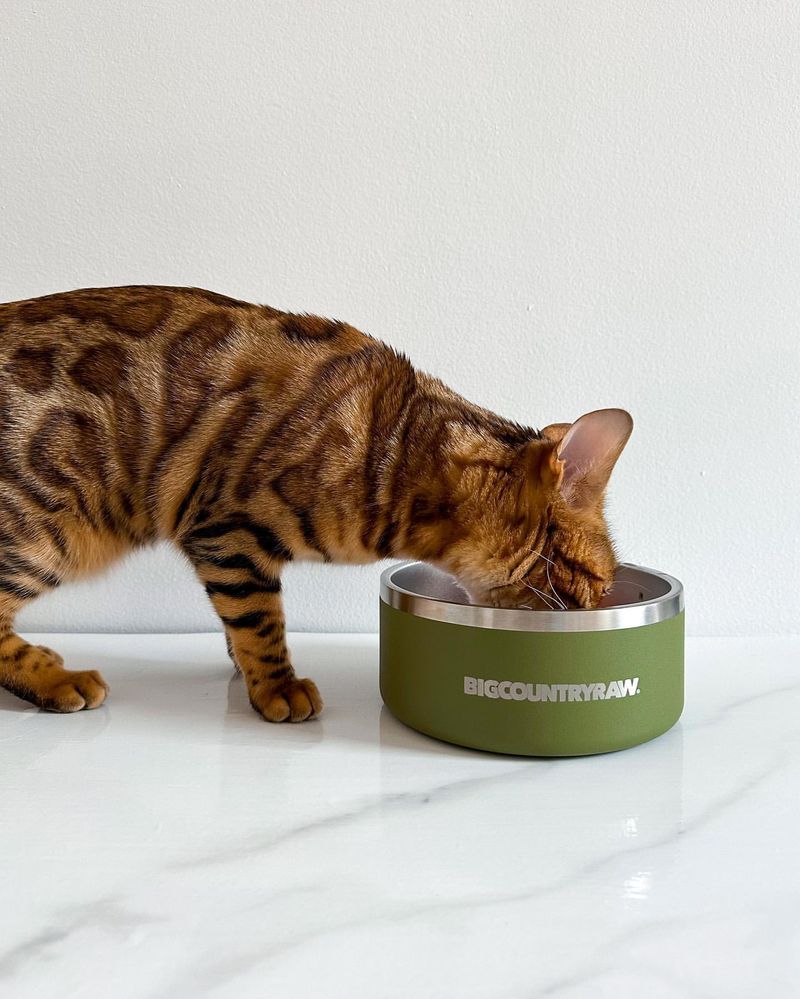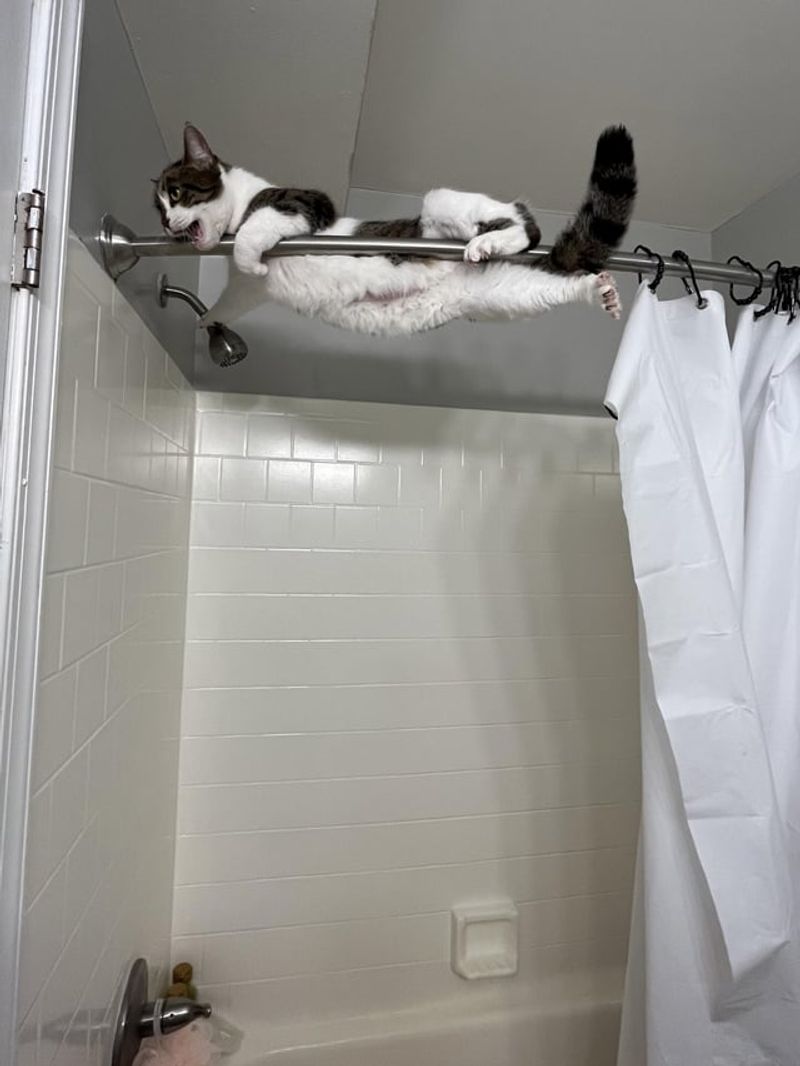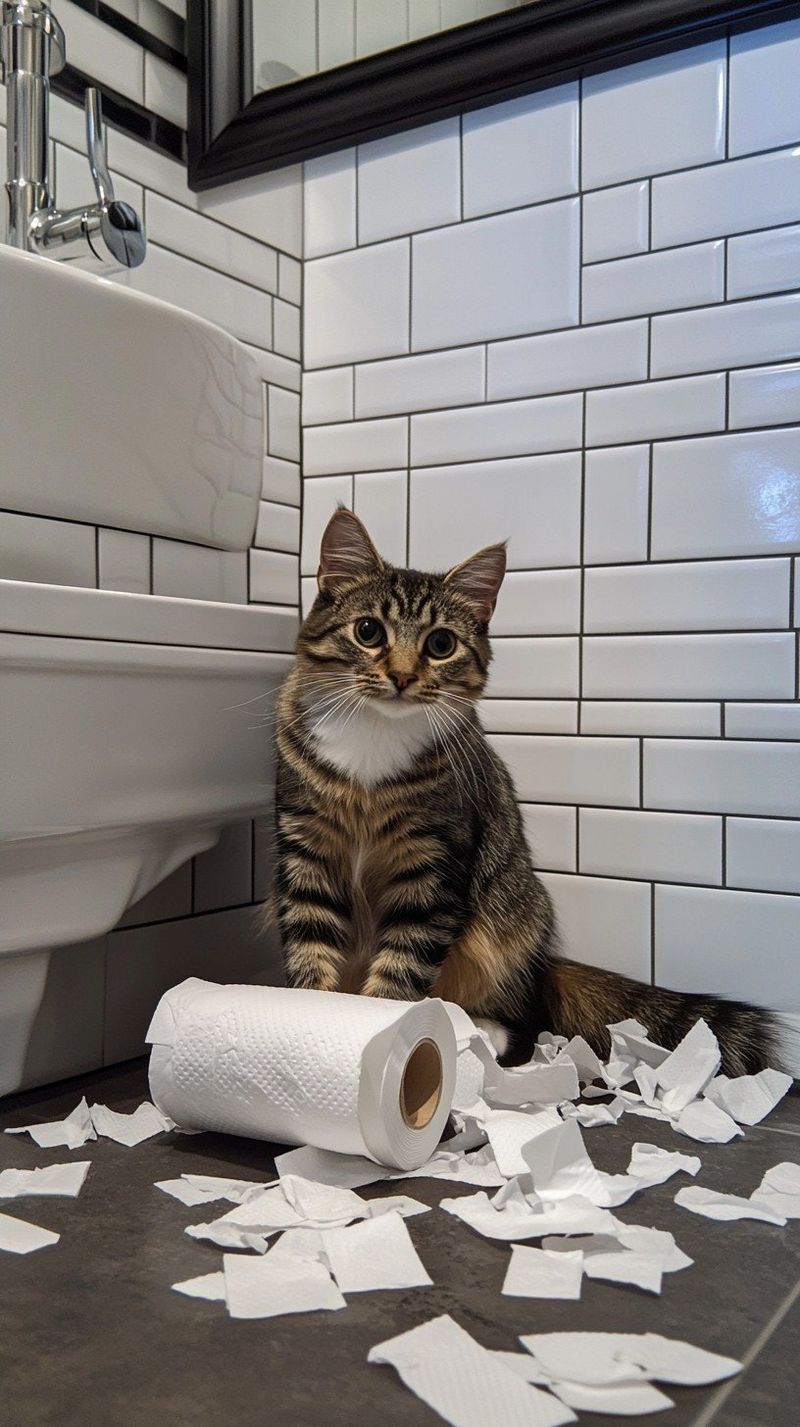📖 Table of Content:
- 1. Endless Shedding
- 2. Scratched Furniture
- 3. Unscheduled Wake-up Calls
- 4. Litter Box Odors
- 5. Mysterious Vomiting
- 6. Sudden Zoomies
- 7. Unexpected Guests
- 8. Selective Affection
- 9. Surprise Allergies
- 10. Territorial Aggression
- 11. Health Expenses
- 12. Curiosity Cat-astrophes
- 13. Feline Food Critic
- 14. Nighttime Stunts
- 15. Unpredictable Bathroom Habits
- 16. Furniture and Personal Item Theft
Cats bring endless charm and companionship, but their curious and independent nature can lead to unexpected challenges. From scratching furniture to knocking items off tables, their mischievous behaviors often test the limits of patience. Despite these quirks, understanding their motivations helps strengthen the bond between you and your feline friend.
Dive into 16 common ways cats can create chaos at home, providing practical tips to manage their antics. Whether it’s curbing midnight zoomies or handling finicky eating habits, each challenge is met with actionable advice. By anticipating and addressing these behaviors, cat owners can enjoy a smoother, more harmonious relationship with their pets.
Embracing the ups and downs of cat ownership turns potential frustrations into opportunities for connection. With the right approach, even the most exasperating moments become part of the rewarding journey of living with a cat.
1. Endless Shedding
Cats shed. A lot. No matter how often you clean, there will always be fur. It sticks to furniture, clothes, and even food, turning your home into a fur-filled zone. To manage, invest in a good vacuum cleaner designed for pet hair. Regular grooming can also help reduce shedding.
Imagine cuddling your cat, only to find your black outfit transformed into a furry mess. It’s almost as if the fur has a mind of its own. The key is persistence and patience. Embrace lint rollers; they’ll become your new best friends. Remember, a fur-free home is a constant battle.
2. Scratched Furniture
Scratching is a cat’s favorite activity. Unfortunately, your furniture often becomes their favorite target. Scratching is natural for cats as it helps them mark territory and sharpen claws. To protect your furniture, provide scratching posts and pads.
Place them strategically around your home, especially near their favorite spots. Training your cat to use them takes time. Spraying deterrents can also be effective. Remember, it’s not just a habit but an instinct. Try to redirect their scratching behavior positively. With consistency and patience, you can save your couch from becoming their claw canvas.
3. Unscheduled Wake-up Calls
Late at night, your cat might suddenly decide it’s the perfect time to play – often around 3 AM. These nocturnal bursts of energy can interrupt your sleep and leave you feeling drained. To avoid this, try engaging your cat in a play session before bedtime to help them wind down.
Consider feeding them before you sleep, as a full stomach might keep them settled. It’s all about creating a serene night environment. Earplugs might become your saviors. Over time, your cat might adjust to your schedule. Until then, prepare for unexpected wake-up calls. Patience is essential, and soon you’ll both find a routine that works.
4. Litter Box Odors
Maintaining your cat’s litter box is crucial. Left unchecked, it can become a source of unpleasant odors. Regular cleaning is essential, as is investing in high-quality litter. Location matters too; place the box in a well-ventilated area.
Odor-reducing sprays can also aid. Consistency in cleaning ensures a fresh-smelling home. No one enjoys a stinky living space, and neither does your cat. Remember, cats are particular about cleanliness. Maintaining a clean litter box is more about their comfort than yours. With diligence, you can keep unpleasant smells at bay.
5. Mysterious Vomiting
Your feline friends might occasionally vomit, often due to hairballs or diet changes. However, it can be worrisome when it becomes frequent. Understanding triggers is vital. Monitor their diet and ensure they’re not eating anything harmful.
Consult a vet if vomiting persists, as it might signal an underlying issue. Regular grooming can help minimize hairballs. Keep a close eye on their food intake and behavior. Sometimes, switching to sensitive stomach cat food helps. It’s important to address the issue promptly. Patience and observation are your tools for maintaining their health.
6. Sudden Zoomies
Zoomies refer to those random bursts of energy where cats sprint madly around the house. While amusing, they can lead to broken items or knocked-over furniture. Providing toys and playtime helps manage this energy.
Understanding that zoomies are normal is important. It’s how cats release pent-up energy. Creating safe spaces where they can run freely without causing damage is key. Encourage active play to help them burn off energy. With time, you’ll learn to anticipate these chaotic moments and hopefully channel their enthusiasm constructively.
7. Unexpected Guests
Since they are hunters by nature, cats sometimes bring home “gifts” like birds or mice. While this behavior is natural, it can be unpleasant for you. To reduce unwanted guests, keep your cat entertained indoors.
Provide toys that stimulate their hunting instincts. If possible, limit their outdoor access with supervised outings. Remember, it’s their way of sharing their accomplishments with you. Encourage indoor play that satisfies their instinctual needs. Redirecting their hunting habits takes time but can be rewarding for both of you.
8. Selective Affection
Cats can be affectionate, but on their terms. This selective affection can feel like a rollercoaster. One moment they’re cuddly, and the next they’re distant. Understanding their moods is crucial.
Respect their boundaries and give them space when needed. Slowly, they may warm up and become more consistent. Patience is key; cats appreciate a gentle approach. Building trust takes time. Foster a safe and loving environment. Remember, every cat is unique in expressing their love. Embrace their quirks and cherish the affectionate moments.
9. Surprise Allergies
Unexpectedly, cat allergies can develop even if you’ve never experienced them before. Sneezing, itchy eyes, and other symptoms might arise out of nowhere. By keeping up with regular cleaning and grooming, you can help minimize allergens in your home.
Consider using air purifiers and hypoallergenic cat products. Allergies can be managed with proper care and medication. Consulting with a doctor can provide relief strategies. Sometimes, simple changes in cleaning routines can make a difference. It’s essential to address allergies promptly to ensure comfort for everyone. With adjustments, you can continue enjoying your cat’s company.
10. Territorial Aggression
Introducing a new cat can lead to territorial aggression. Cats are creatures of habit and might not welcome newcomers warmly. Gradual introductions and separate spaces can help ease tensions.
Supervised interactions build trust between cats. Patience is crucial during this period. Recognize signs of aggression and address them calmly. Creating positive experiences fosters harmony. With time and effort, even the most territorial cats can learn to share their space. Encouraging peaceful coexistence requires understanding and dedication.
11. Health Expenses
Unexpected health issues in cats can lead to hefty vet bills, often catching owners off guard. Regular check-ups and pet insurance help manage these costs, ensuring you’re prepared. Prioritizing preventive care plays a vital role in keeping your cat healthy and happy.
Budgeting for potential health costs is wise. Unexpected illnesses can happen, requiring prompt medical attention. By being proactive, you can ensure your cat receives the necessary care without financial strain. Consider creating a savings fund for emergencies. Investing in their health today saves stress and costs tomorrow. Your cat’s health is an investment worth making.
12. Curiosity Cat-astrophes
Driven by curiosity, cats often find themselves in trouble—toppling decorations or getting caught in cords. Protecting your home through cat-proofing helps prevent these mishaps and keeps both your pet and possessions secure.
Remove hazards and secure breakables. Encouraging safe exploration keeps them entertained without chaos. Providing interactive toys and supervised playtime can redirect curiosity positively. Understanding their need to explore is essential. With precautions, you can create a safe environment where their curiosity thrives without catastrophe.
13. Feline Food Critic
Some cats are finicky eaters, making mealtime challenging. Finding food they enjoy within budget constraints can be tricky. Experiment with different flavors and textures to discover preferences.
Gradually introduce new foods to avoid digestive issues. Keep an eye on portion sizes and nutrition. Consulting with a vet ensures balanced meals. Remember, patience is key. It might take time to find the perfect diet. Encouraging consistent eating habits benefits their health. A little trial and error lead to a satisfying mealtime routine for both of you.
14. Nighttime Stunts
As the moon rises, cats often transform into nocturnal acrobats, bringing an unparalleled energy to the night. Picture this: you’re fast asleep when suddenly, a series of thuds echoes through your home. Your feline friend has decided that 3 AM is the perfect time to practice parkour.
Leaping from sofa to shelf, they engage in their own nightly Olympics. The clatter of falling objects becomes your unexpected alarm clock. Their playful antics, though impressive, can disrupt your restful slumber. Consider investing in some quiet toys or late evening play sessions to help channel that nighttime energy into something a bit less disruptive.
15. Unpredictable Bathroom Habits
While cats’ bathroom habits can be quirky, they can occasionally become overwhelming. You might enter the bathroom to find toilet paper all over the place, or worse, discover that your cat has abandoned the litter box for a more unconventional location. It’s a perplexing and irritating behavior that no cat owner wants to deal with.
To tackle this, ensure their litter box is clean and easily accessible. A little patience and perhaps a change in litter type could work wonders in keeping their bathroom habits in check.
16. Furniture and Personal Item Theft
Cats possess a curious nature, often leading them to ‘borrow’ your belongings without permission. This habit of swiping items can extend to pens, jewelry, or even small toys. Their light-footed pilfering is both amusing and exasperating, leaving you to constantly retrieve your possessions.
To curb this behavior, try providing them with their own toys to satisfy their playful spirit. Engaging in interactive playtime can also redirect their attention away from your cherished items.
